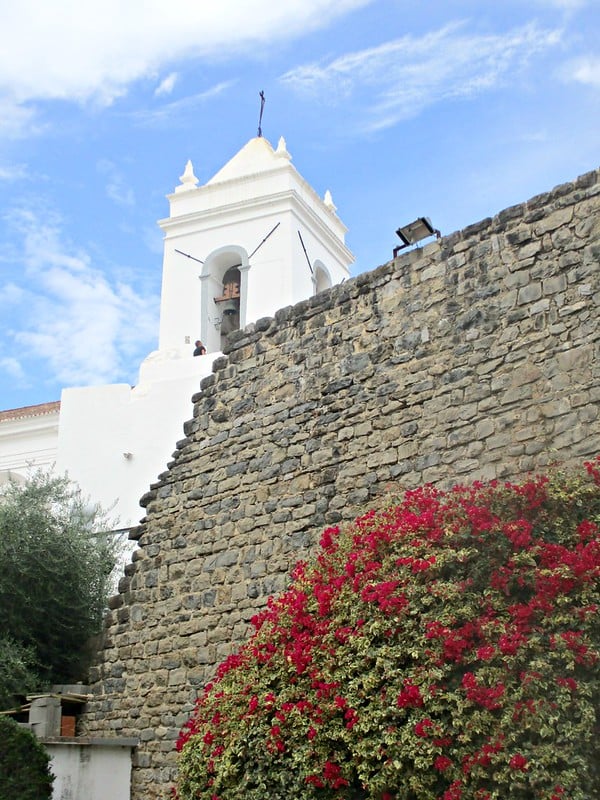In the dark splendor of the stone walls and in the narrow alleys of Lusitanian cities, there is a story whispered by the wind, a narrative interwoven between the arid past and the silent present. It’s a story embedded in the soil like the deep roots of an ancient tree. In the confines of forgotten memories, the Arab presence in Portugal emerges, an enigmatic legacy entrenched in the stones worn by time and in the chronicles silenced by the course of the years.
From the majestic ruins of Mértola to the red desert of Silves, from the soaring towers of Coimbra to the crumbling walls of Elvas, each city holds secrets intertwined with Arab rule. In Santarém, the shadows of once-great mosques dance in the narrow alleys, while Lisbon carries with it the echo of the thousand voices that once resounded in the bustling souks. Alcácer do Sal, guardian of the memories buried on the banks of the Sado, tells stories of conquest and resistance, while Moura, rocked by the calm waters of the Guadiana, keeps the pulse of a lost past in its narrow streets.
In the intricate fabric of these historical narrative, we unravel the mysteries buried beneath the stones, pieces of the puzzle that make up the rich tapestry of the Arab presence in Portugal.
Coimbra
Coimbra, a city with a rich and complex history, traces its origins back to the Roman occupation, when it was known as Eminio. During the Roman period, it was an important city, with its forum standing out. After the Germanic invasions and the arrival of the Muslims, Coimbra, then called Qulumbriya, became a crucial trading post between the Christian north and the Moorish south. Under Muslim rule, an alcázar was erected whose bases are still visible today, incorporated into the Paço das Escolas and the Porta Férrea of the University of Coimbra. In 871, it became the County of Coimbra, but it wasn’t until 1064 that it was definitively reconquered by the Christians.
The Arab presence in Coimbra during the Muslim period was marked by the city’s transformation into an important commercial and cultural hub. Under the name of Qulumbriya, Coimbra became a meeting point between the Christian north and the Muslim south, with a strong presence of the Mozarabic community.
One of the most visible landmarks of the Arab presence in Coimbra is the alcázar, a defensive structure in the shape of an almost regular quadrilateral, about 80 meters on a side, erected during Muslim rule. These foundations have survived the test of time and have been incorporated into the Paço das Escolas and the Porta Férrea of the University of Coimbra, providing tangible testimony to the Arab influence on the city’s architecture.
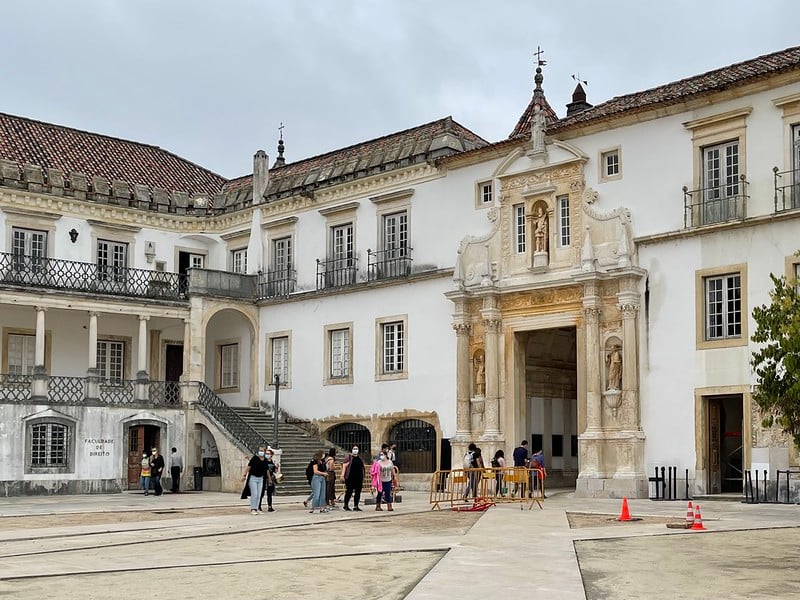
In addition, the Arab presence left a lasting legacy on Coimbra’s language, culture and society. Many words of Arab origin were incorporated into the Portuguese language, while aspects of the cuisine, music and social traditions were influenced by the coexistence of the Christian and Muslim communities.
The Arab presence in Coimbra was a period of cultural exchange and coexistence that profoundly shaped the city’s identity. Even after the Christian Reconquest, the legacy of the Moors remains an integral part of Coimbra’s history and culture, reminding us of the wealth of cultural interactions that have characterized the Iberian Peninsula over the centuries.
The Medieval Era saw Coimbra re-emerge as an important city, becoming the capital of a vast county ruled by the Mozarab Sesnando. It later became the residence of Henry and Teresa, parents of Afonso Henriques, often considered the first king of Portugal. The city maintained its importance until 1255, when the capital was transferred to Lisbon. In the 12th century, Coimbra already had a distinct urban structure, with the upper town, where the aristocrats and clergy lived, and the lower town, dedicated to commerce and handicrafts.
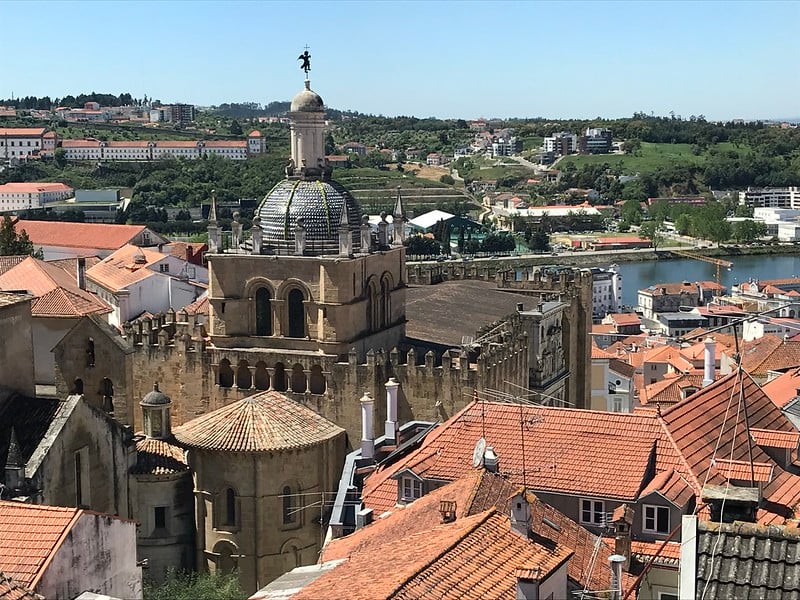
From the 16th century onwards, Coimbra’s history revolved around the University of Coimbra. In the 19th century, the city faced difficulties during the French occupation and the extinction of the religious orders, but regained its splendor with the development of infrastructure such as the electric telegraph, gas lighting and the arrival of the railway.
Santarém
Santarém, a city with a rich and multifaceted history, dates back to the times of Greco-Roman and Christian mythology, where the names of Habis and Irene are recognized as its mythical origins. Documents dating back to the 8th century BC testify to human occupation in the region, which collaborated with the Roman colonizers when they arrived in 138 BC.
During Roman rule, Santarém prospered as an important trading post on the banks of the Tagus River and was a vital administrative center in the province of Lusitania. Under the name of Escálabis or Scallabi castro, the city was known and respected.
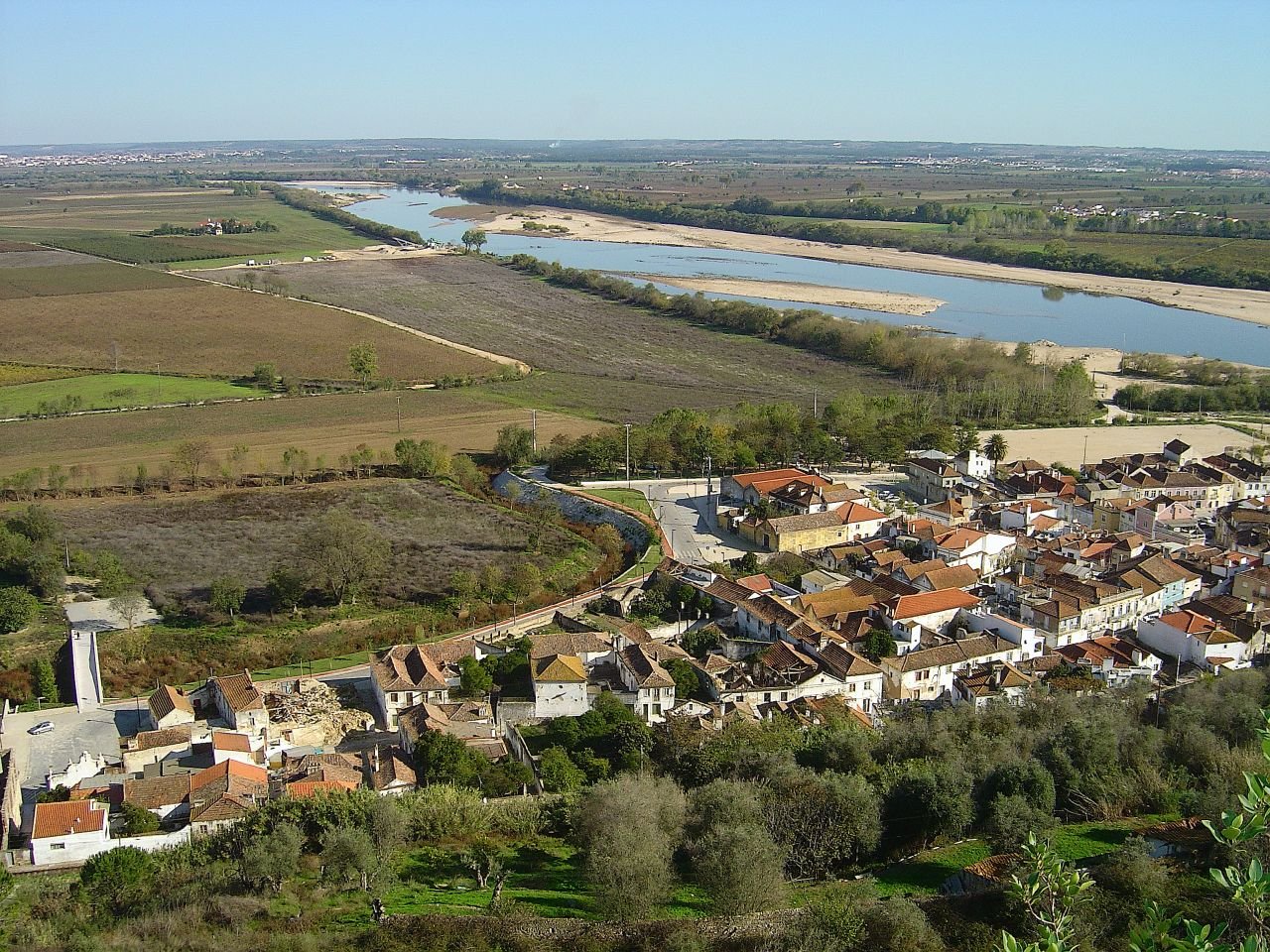
However, with the invasions of the Alans and the Vandals, Santarém was designated as Santa Iria, later evolving to its current name. In 715, the city fell under Moorish rule, becoming part of the Islamic caliphate. For a brief period before the definitive conquest by King Afonso Henriques in 1147, Santarém was the seat of a small independent emirate, known as the Taifa of Santarém.
The Arab presence in Santarem was marked by a period of Muslim rule that lasted around four centuries, beginning in 715. During this time, the city flourished as part of the Islamic caliphate, becoming an important political and economic center in the region.
Santarém, then known as Santa Iria, was the scene of a mixture of cultures and traditions during Muslim rule. Under Arab control, the city witnessed a flourishing of architecture, with the construction of mosques, palaces and fortifications that reflected the Islamic influence in the region.
After the Christian conquest in 1147, Santarém continued to be a prominent political and cultural center, the scene of numerous Cortes. However, over time, it lost some of its importance to Lisbon, which became the new seat of the diocese and a crucial center on the coast.
Lisbon
Lisbon is one of the oldest cities in Western Europe, with a history dating back millennia. Located on the west coast of Portugal, at the mouth of the Tagus River, the city has a strategic location that has played a crucial role in its history.
The first traces of human occupation in the Lisbon area date back to the Neolithic period, with communities living off fishing and agriculture. Later, the region was colonized by Celtic peoples, who gave rise to the city’s original name, Olisipo, around the 6th century BC.
During the Roman period, Lisbon grew in importance as a vital trading port in the far west of the Roman Empire. Named Olisipo, the city was an important center for trade and pottery production, exporting products such as olive oil, wine and fish salting to other parts of the Empire.
After the fall of the Roman Empire in the 5th century AD, Lisbon was occupied by different Germanic peoples, such as the Suevi and the Visigoths, who established their own kingdoms on the Iberian Peninsula. However, it was the arrival of the Moors at the beginning of the 8th century that had a significant impact on the history of Lisbon and the region.
The Arab presence in Lisbon began in 711, when Muslim forces led by Tariq ibn Ziyad invaded the Iberian Peninsula from North Africa. Before long, the Moors had conquered most of the peninsula, including the region where Portugal is today. Lisbon, then known as Al-Ushbuna, was conquered by the Muslims around the year 714.
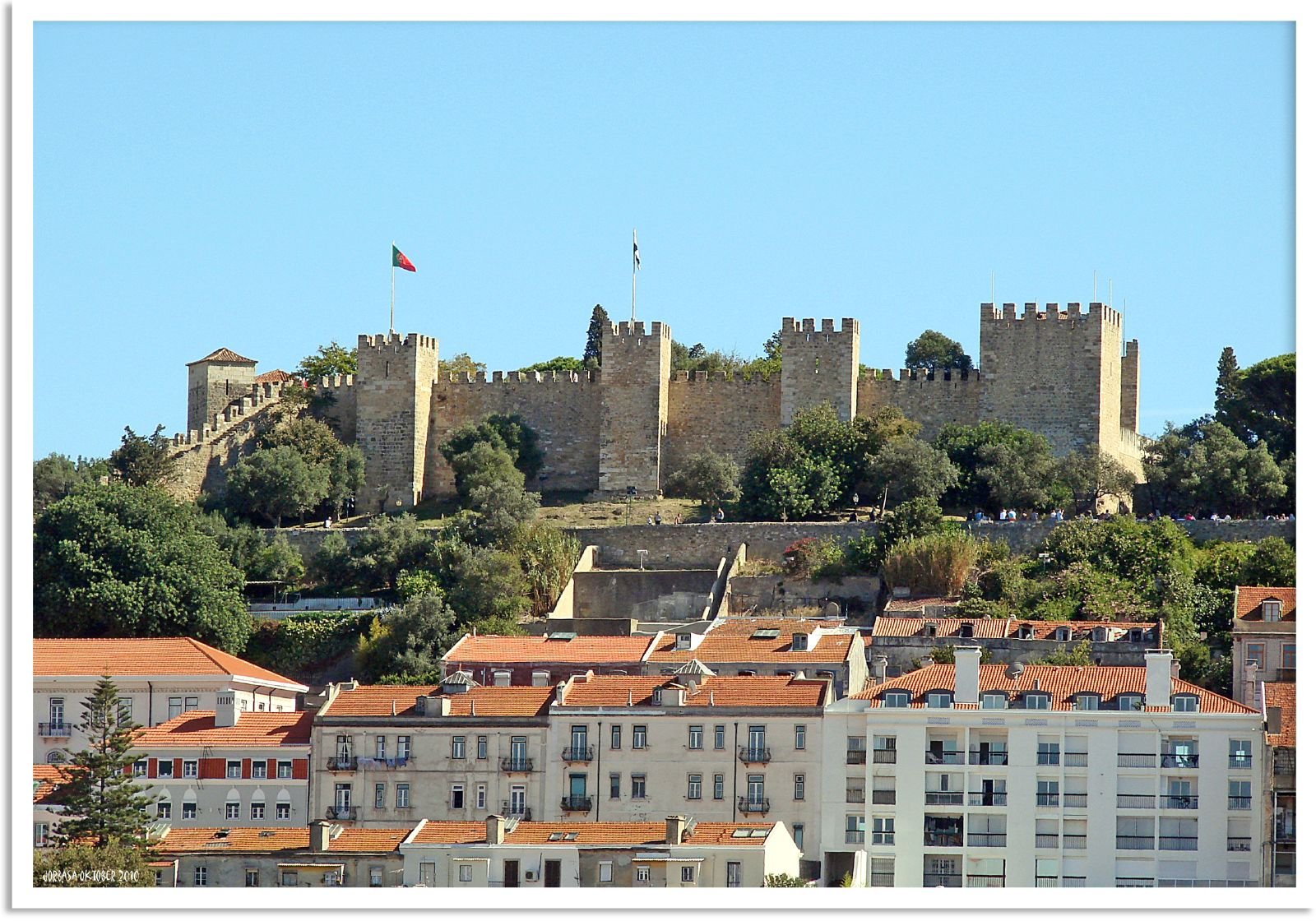
During Muslim rule, Lisbon experienced a period of prosperity and development. The city became an important urban center, with a multicultural population and an economy based on trade, agriculture and fishing. The Moors fortified the city and expanded its infrastructure, including irrigation systems and roads.
The Arab presence in Lisbon lasted around 400 years until, in 1147, the city was conquered by Christian forces during the Christian Reconquest. The conquest of Lisbon was led by King Afonso I of Portugal, with the help of European crusaders.
After the Christian reconquest, Lisbon was gradually integrated into the kingdom of Portugal, becoming an important city in the context of Portuguese maritime expansion in the following centuries. The Arab heritage, however, left a lasting mark on Lisbon’s culture and architecture, which is still evident today.
In architecture, the Moors left an impressive legacy, with many buildings and structures that can still be seen today. Examples include the Castelo de São Jorge, an ancient Moorish fortress located on top of a hill overlooking the center of Lisbon, and the Sé de Lisboa, a cathedral built on the remains of an old Muslim mosque.
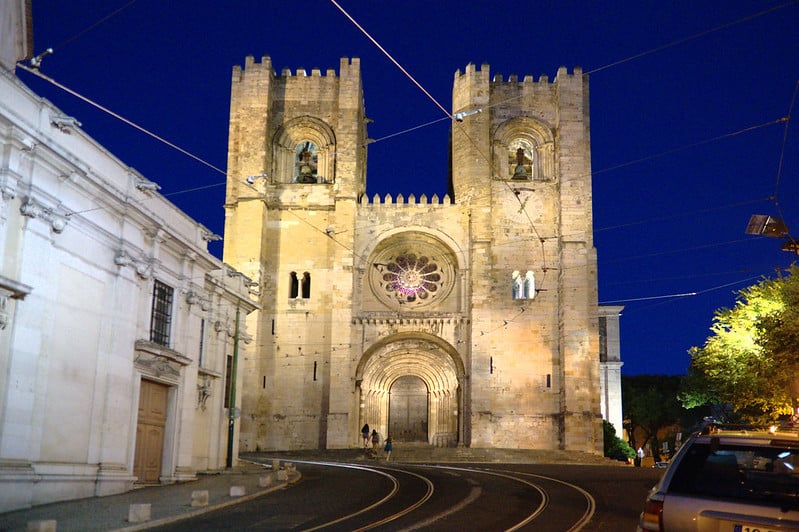
Alcácer do Sal
Alcácer do Sal, a city marked by time and the tides of the Sado River, is a historical gem dating back thousands of years, where traces of different civilizations intertwine to tell its unique story. Exploring this enchanting region, we delve into the layers of the past, from the first Mesolithic settlements to the Arab influences that left an indelible mark on its culture and architecture.
The history of Alcácer do Sal begins more than 40,000 years ago, with the human presence witnessed by archaeology. In the early Mesolithic period, the first communities settled in this area, exploiting the abundant resources of the Sado River estuary. Fishing, hunting, and gathering shaped the daily lives of these ancient inhabitants.
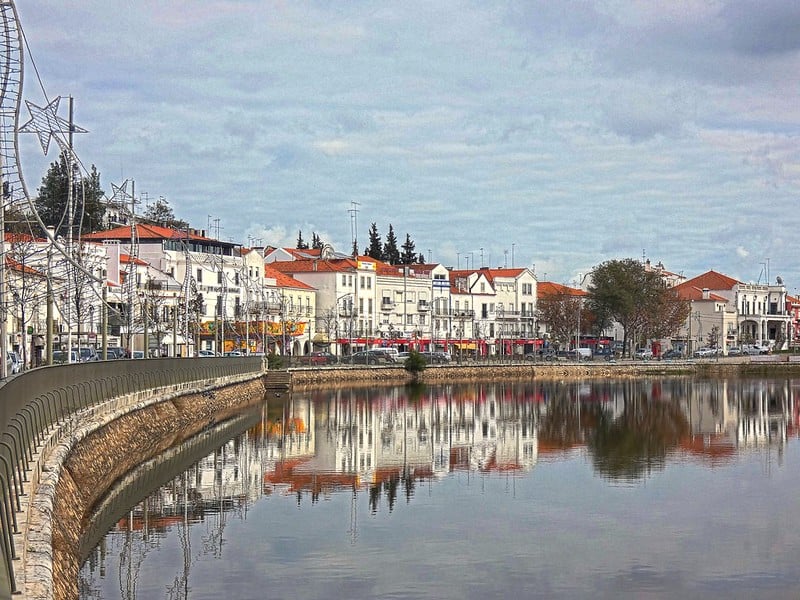
Phoenician rule brought a new era of trade and culture to Alcácer do Sal. Phoenician settlers established themselves on the banks of the river, introducing Near Eastern values and practices, which integrated with local traditions. Under Roman rule, the city prospered as a crucial center on the Atlantic route, known as Salacia, paying homage to the goddess of salty waters.
The arrival of the Arabs marked a period of transformation for Alcácer do Sal. The fortress of al-Qasr was erected, testifying to the military and administrative dominance of this new civilization. Under the Umayyad Caliphate of Damascus, the city flourished as a center of trade and regional power, playing a crucial role in the Islamic expansion across the Iberian Peninsula.
The Portuguese conquest brought a new era to Alcácer do Sal. Transformed into the seat of the Order of Santiago, the city became a strategic point in the defense and expansion of the kingdom. During the Discoveries, its proximity to the Sado River made it vital for shipbuilding and maritime trade, contributing to Portugal’s wealth and prestige.
Today, Alcácer do Sal is facing a new chapter in its history, and the town is rediscovering its cultural and natural heritage. The rebirth of the Sado as a cultural waterway is reviving interest in this charming Alentejo town, offering visitors a unique experience that blends history, tradition and natural beauty.
Elvas
The history of Elvas begins even before its foundation, in ancient times during the Iron Age. At that time, the region was already home to primitive settlements, traces of which can be seen in the magnificent megalithic monuments scattered throughout the municipality of Elvas. Dolmens, cromlechs, and necropolises bear witness to the ancient presence and fertility of the fields that have sustained human communities for millennia.
Today, visitors can explore this rich archaeological heritage through specially prepared circuits, which offer a journey back in time through stunning landscapes. Although many of these monuments are on private property, others are accessible to the public, inviting picnic moments amidst the Alentejo nature.
During the Iron Age, new technological innovations and improvements in the art of war led to the emergence of fortified settlements in strategic locations. Elvas, with its naturally defensible topography, emerged as one of these centers of power. Here, the inhabitants developed an agro-pastoral economy, taking advantage of the land’s resources and exploiting the region’s iron and tin mines.
The settlement of Segovia, between Elvas and Campo Maior, stands out as an emblematic example of this period, showing the contacts established with Mediterranean populations through ceramic artifacts found at the site.
With the arrival of the Romans on the Iberian Peninsula, Elvas came into contact with the vast civilization that dominated the known world at the time. The Romans established a small fortification in the area, taking advantage of its strategic location on the trade routes between Emerita Augusta (Mérida), Ebura (Évora) and Olisipo (Lisbon).
During the Islamic period, Elvas, then known as Ialbax, flourished as an important urban center in the region. Its strategic location on the trade routes between the south of the Iberian Peninsula and North Africa allowed a thriving economy based on trade and agriculture to flourish.
The mediana, or walled city, was the beating heart of life in Ialbax. Narrow streets meandered between adobe houses and stores, where artisans, merchants, and farmers gathered to conduct business and exchange stories. The Arab influence on the architecture can be seen in the traditional white-walled houses and the inner courtyards, designed to provide shade and coolness on hot summer days.
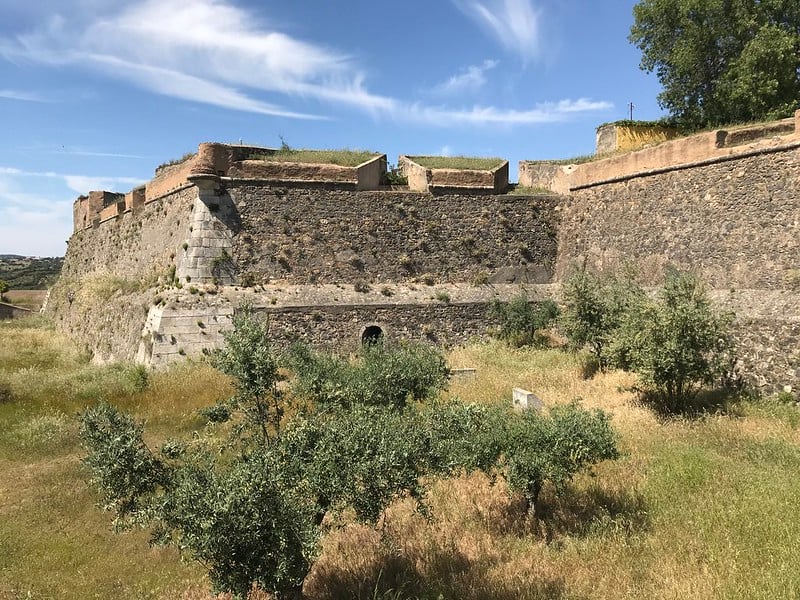
The Arab presence also left an indelible mark on Elvas’s defensive system. The walls and fortifications built during the Islamic period reflect the need to protect the city against invasions and external attacks. The Arab cistern, an impressive example of hydraulic engineering, was a vital source of water for the city’s inhabitants during periods of siege.
In addition, the city gates, such as the Bath Gate and the Bishop’s Gate, reflect the Arabs’ ability to build imposing and functional defensive structures. These gates not only controlled access to the city, but also served as symbols of power and authority.
The Arab presence also left an indelible mark on the religious and cultural life of Elvas. Mosques, such as the one that today houses the church of Santa Maria dos Mártires, were centers of worship and education, where the faithful gathered to pray and study the sacred scriptures.
The history of Elvas is marked by conflicts and power struggles between Christians and Muslims. Under the command of King Sancho II, the Christians finally conquered the city in 1229, beginning a new phase in its history. The granting of the charter and the construction of Christian churches, such as the church of Santa Maria dos Mártires, symbolize the transition to Christian rule and the consolidation of the city’s identity.
During the Fernandine Wars, Elvas once again became the scene of decisive battles. Under siege by the Castilians, the city resisted bravely, guaranteeing the integrity of Lisbon until English support arrived. The construction of the Fernandina wall and other defensive works stand out as testimony to this turbulent period and the determination of the population to protect their city.
Today, Elvas keeps the memory of its rich history alive through its monuments, churches and fortifications. By strolling through its ancient streets and admiring its landscapes, visitors are invited to take a journey through the centuries, witnessing the evolution and challenges faced by this resilient city.
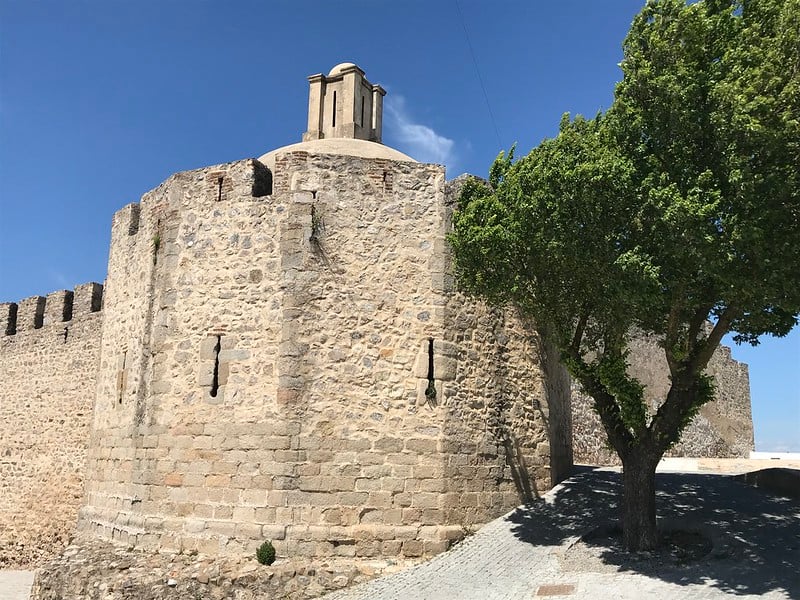
Moura
Moura, a city of charms and intertwined histories, opens its doors to those who wish to unravel the mysteries of its rich Arab heritage. Strategically located, its history dates back to the times of Roman occupation, when it was known as Aruci Novum. However, it was under Muslim rule that it gained prominence as Al-Manijah, a pulsating center of culture and commerce. Today, the name Moura evokes the legendary figure of Moura Salúquia, a central character in its fascinating history.
Dominating the city’s skyline, Moura Castle is an imposing symbol of its turbulent history. Erected at the highest point, its walls hold secrets of battles fought over the centuries. Islamic and Christian remains intertwine, bearing witness to disputes over control of the territory. From the Iron Age to modern times, the castle has been the scene of military strategies and resistance.
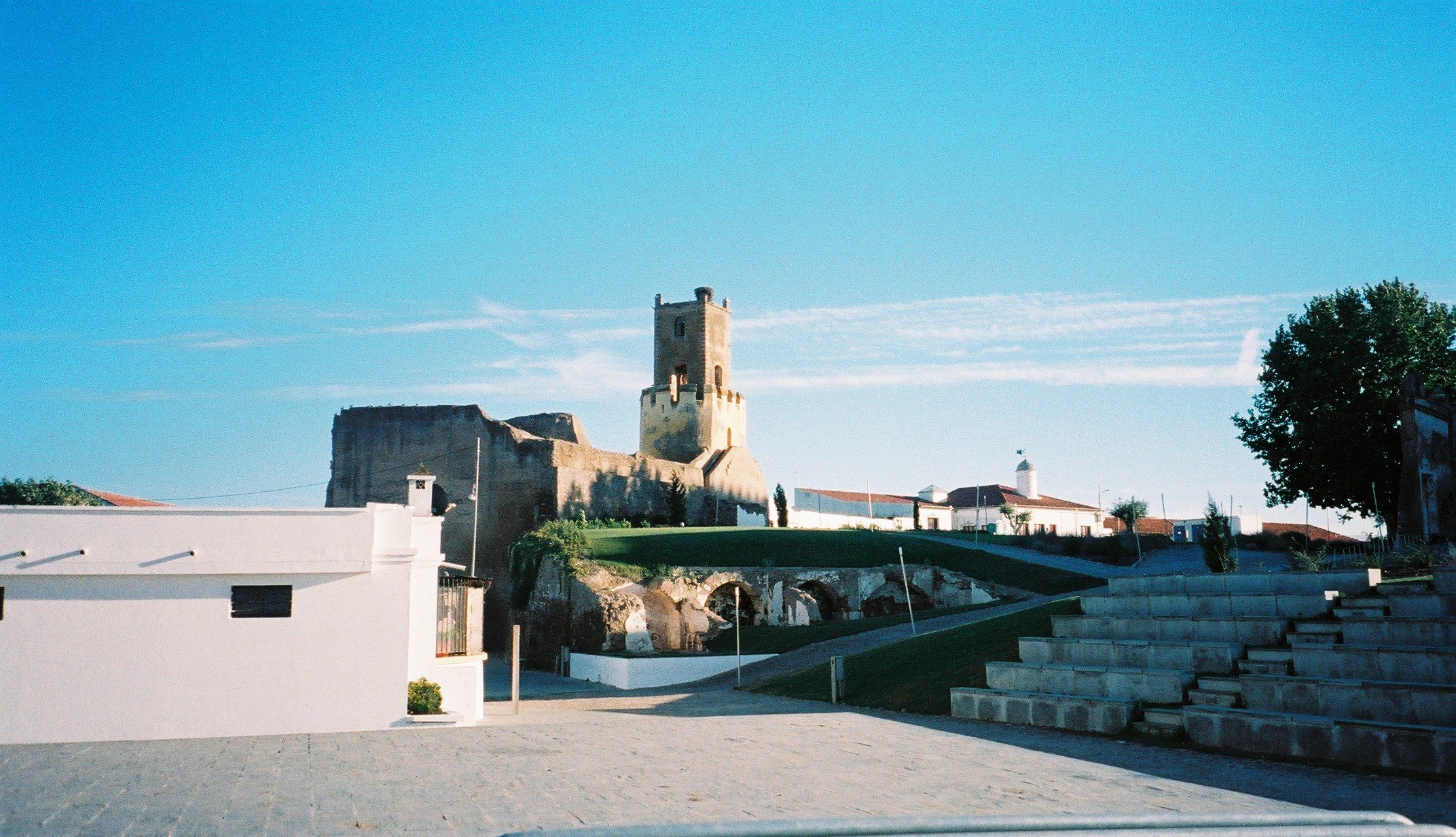
Around the castle, Mouraria emerges, a neighborhood that breathes the Arab heritage of Moura. Dating back to the 13th century, this neighborhood was home to a vibrant and influential Moorish community. It is here that the legend of Moura Salúquia comes to life. Daughter of Abu-Hassan, governor of the city, Salúquia is a legendary figure whose fate is intertwined with forbidden love and tragedy.
It is said that Salúquia, in love with Bráfama, the Moorish mayor of Aroche, saw her destiny cross paths with that of Afonso Henriques, the founder of Portugal. The siege by the Christian knights and the fatal ambush mark a crucial point in the city’s history. The Tower of Salúquia, still standing in Moura Castle, is a poetic reminder of this tragic love.
In addition to the legends, Moura offers a wealth of points of interest that reflect its Arab heritage. The watchtowers, such as the Atalaia Magra, reflect the need for protection in times of conflict. The historic fountains, Três Bicas and Santa Comba, fed by springs inside the castle, are oases of freshness amidst the Alentejo heat.
One cannot forget the influence on religious architecture. The Mother Church of São João Batista, commissioned by King Manuel, echoes the styles and influences of the time, while the Carmo Convent, the first of the Carmelite Order in Portugal, is a testimony to the religious and cultural presence of the Arabs in Moura.
Today, Moura hosts a mix of cultures. Elevated to city status in 1988, Moura celebrates its history and traditions. The municipal holiday on June 24 is an opportunity for residents and visitors to come together and honor their roots.
On the city’s coat of arms, the figure of the fallen Moor and the tower in the background tell the story of Salúquia and her tragic fate, a constant reminder of the complexity and beauty of Moura’s history.
To explore Moura is to immerse yourself in a world of living history. From the imposing Moura Castle to the enchanted atmosphere of Mouraria, every street and monument tells a story from times gone by. The legend of Moura Salúquia is just one chapter in this fascinating narrative. In every stone, in every tower, in every fountain, the legacy of the Arabs in Moura echoes.
Mértola
Archaeological excavations, which began in the 1970s, have revealed a deep past dating back to the Neolithic period. Mértola is a city whose history is intertwined with ancient civilizations, witnessed by the monumental buildings and Roman remains that dot the landscape. From the cryptoporticus to the Couraça Tower, every stone tells a story.
Under Roman rule, Mértola prospered as Mírtilis Júlia, an important river port. The Mina de São Domingos, with its mineral wealth, bears witness to this period of splendor. The Roman remains, such as the Roman house and the ancient roads, reveal the magnitude of the Roman presence in this land.
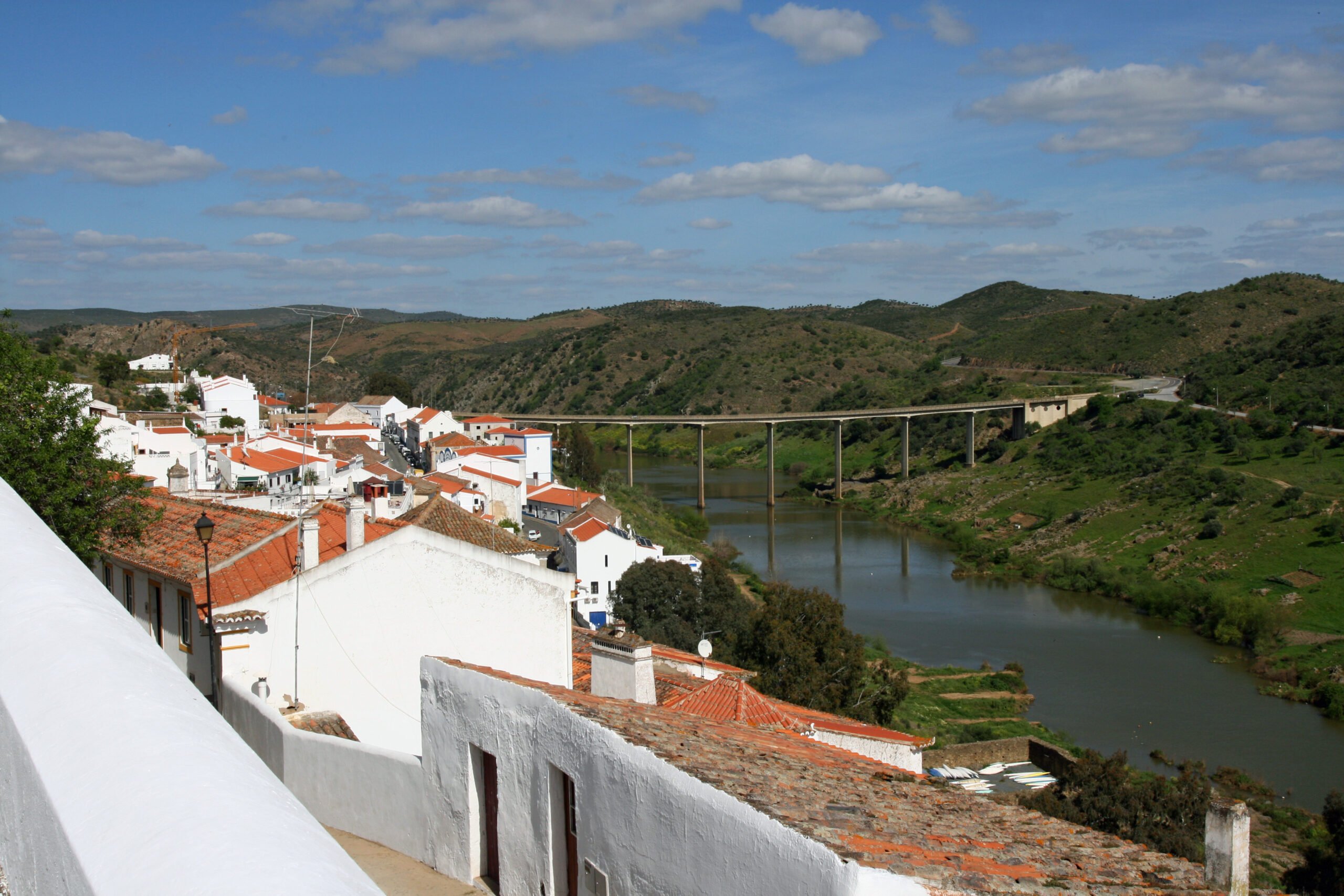
With the arrival of the Arabs in 711, Mértola was given a new lease of life as the westernmost port on the Mediterranean. Under Islamic rule, the city flourished, becoming the capital of a small independent emirate, the Taifa of Mértola. The Almohad quarter, built over the old Roman Forum, is a stunning testimony to this dynamic period. The Mértola Museum houses a treasure trove of Islamic art, providing a unique insight into this vibrant era.
After centuries of Arab domination, Mértola was finally retaken by Christian forces in 1238. The castle of Mértola, with its imposing keep, is a reminder of the resistance and shifts in power throughout history. The architectural materials from the 6th to 9th centuries on display in the tower are tangible testimonies to the Visigothic presence in this region.
At the end of the 19th century, the discovery of the São Domingos mine brought a new era of prosperity to Mértola. However, the decline of mining brought with it economic and social challenges. Despite the difficulties, Mértola found new hope through archaeology and the preservation of its cultural heritage. The foundation of the Mértola Archaeological Site and the efforts to enhance its past are testimony to the city’s commitment to honoring its roots and building a sustainable future.
With its rich history and preservation efforts, Mértola has been named a UNESCO World Heritage Site Candidate in Portugal. This international recognition highlights the city’s importance as a cultural treasure that deserves to be protected and appreciated for generations to come.
Silves
Silves, a town once known as Xelb by the Arabs, is a historical gem in the south of Portugal, where the traces of a rich Arab presence remain. As you walk through its time-worn cobbled streets and admire the imposing walls of its castle, you are transported to an era when Silves was a prosperous capital of the Algarve Emirate, one of the most important political centers in the region.
For nearly half a millennium, Silves flourished under Muslim rule, becoming a vital center of commerce, culture, and architecture. Entering the city through the ancient city gates, we are greeted by the vivid description of the Muslim geographer El Idrisi: “Silves, a beautiful city built on a plain, is surrounded by a strong wall. The surroundings are covered with vegetable gardens and orchards. Water is drunk from a river that bathes the town from the south and moves mills.”
Traces of this golden age are scattered throughout the city. The majestic Almedina Tower, built during Muslim rule, stands as a silent witness to the architectural skill and military power of the time. As we explore the narrow streets of the historic center, we can glimpse the remains of bustling markets and elegant buildings that testify to the opulence of Islamic Silves.
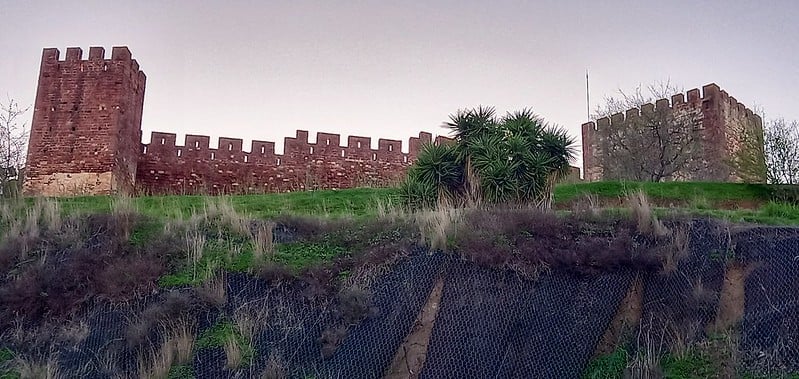
But it is perhaps in the language and culture that we find the most lasting legacy of the Arabs in Silves. The city’s original inhabitants were mainly Yemenis, who brought with them their pure Arabic dialect and a tradition of poetry and eloquence. The words of the poet Almutâmide still echo today on the walls of Silves Castle: “The places so dear to me / From my unforgettable youth.”
However, Silves’ history is also marked by periods of conflict and change. During the 9th and 10th centuries, the city faced attacks from the Normans, who sought to exploit the internal divisions of Al-Andalus. Despite these ordeals, Silves endured as a fortress of culture and civilization.
The Christian Reconquest brought with it new chapters in Silves’ history. In 1189, King Sancho I, in an attempt to capture the city, resorted to Nordic Crusader mercenaries, unleashing a brutal siege that resulted in the sacking of the city. The definitive reconquest only took place in 1249, during the reign of King Afonso III, when Silves was taken by Paio Peres Correia, master of the Order of Santiago.
After centuries of Muslim rule, Silves was in ruins, but the efforts of King Afonso III to rebuild and repopulate the city ushered in a new era of prosperity. Privileged with a strategic location and a busy river port, Silves once again became an economic and cultural center in the Algarve region.
In the Silves of today, the past is alive, inviting us to explore and celebrate the diversity and richness of the Iberian Peninsula’s cultural heritage.
Faro
Faro, then known as Santa Maria de Ossónoba, saw its rise during the Arab period, between the 8th and 13th centuries. When Muça ibne Noçáir led the second Arab invasion, the city was conquered and a new chapter in its history began. The Arab influence manifested itself in the densification and consolidation of the urban core, with the rebuilding of the main Mosque, now raised about three meters above its previous level. The old town, known as Vila-Dentro, retained its fundamental structure, but now with a more sinuous layout, characteristic of Arab architecture.
The Arab reconstruction brought not only physical changes, but also a cultural flowering. With the city rebuilt on its ancient foundations, new architectural landmarks emerged, including the main mosque, which became the center of religious and cultural life. The urban fabric was densified and expanded, with new neighborhoods springing up outside the walls, such as the Mouraria and the Jewish Quarter, each contributing to the city’s cultural richness.
During this period, the Mozarabs, descendants of the Islamized Christians, played a significant role in the life of the city. Their revolt against Arab rule in 870 resulted in a brief period of independence, led by Iáia ibne Becre. Under his rule, important improvements were made to the city, including the construction of the walls that still surround the Inner Town today. This period also witnessed the introduction of hundreds of Arabic words into the local language, showing the lasting influence of Arab culture.
As the centuries passed, Santa Maria de Ossónoba became Santa Maria Ibn Harun, reflecting the continuity of Arab influence in the region. Under the rule of Abu Ottoman Saíde ibne Harune, the city reached its peak, described as “medium-sized and very beautiful” by Dreses, an Arab geographer of the time. The city flourished as a center of commerce and culture, with its waterfront location facilitating the movement of ships and goods.
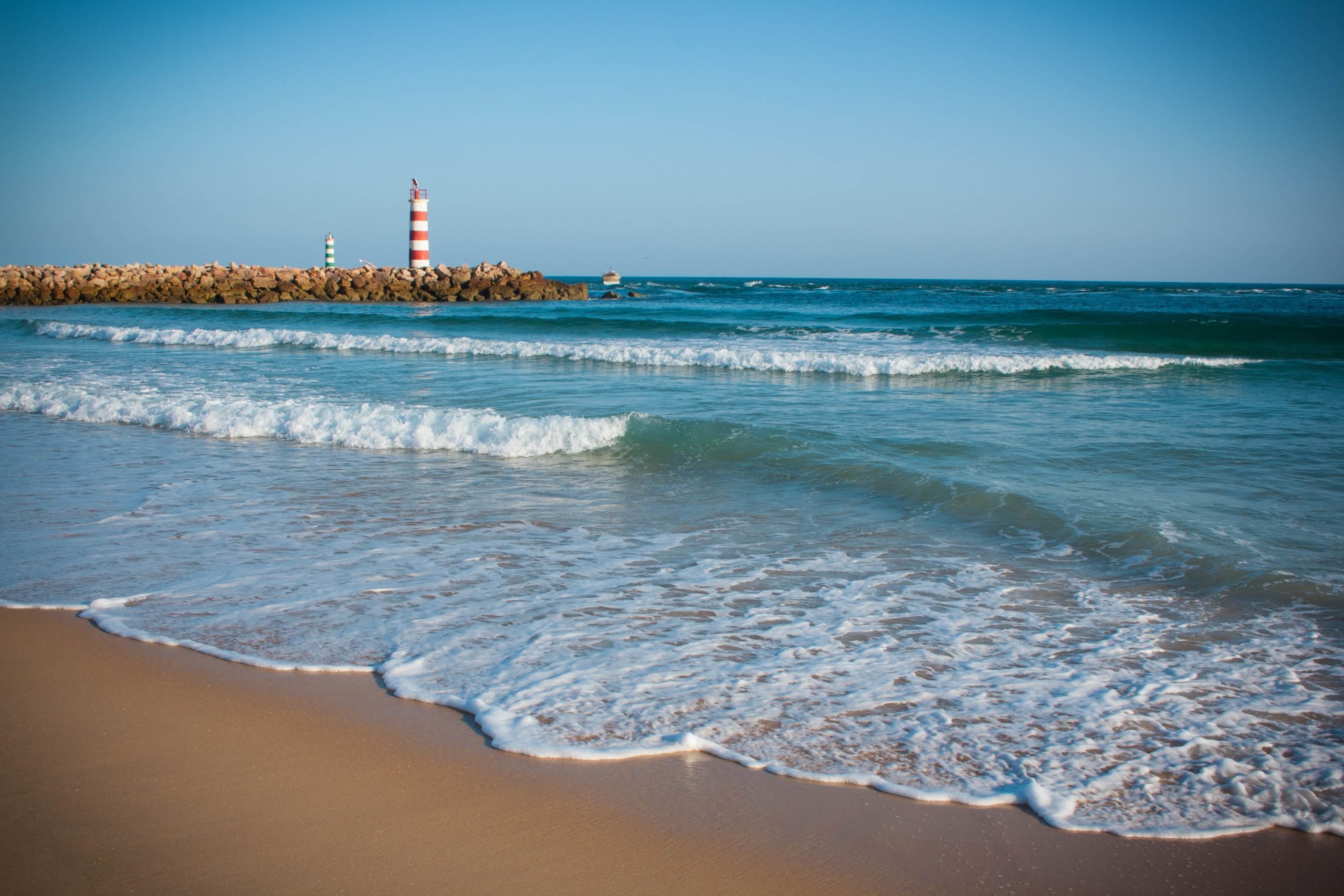
Although the Arab influence in Faro has diminished over time, its legacy endures to this day. Many of the architectural landmarks and urban features that emerged during this period can still be seen in the city, displaying Faro’s rich history and cultural diversity. As the city looks to the future, it continues to honor and preserve its Arab heritage, ensuring that future generations can appreciate and learn from its past.
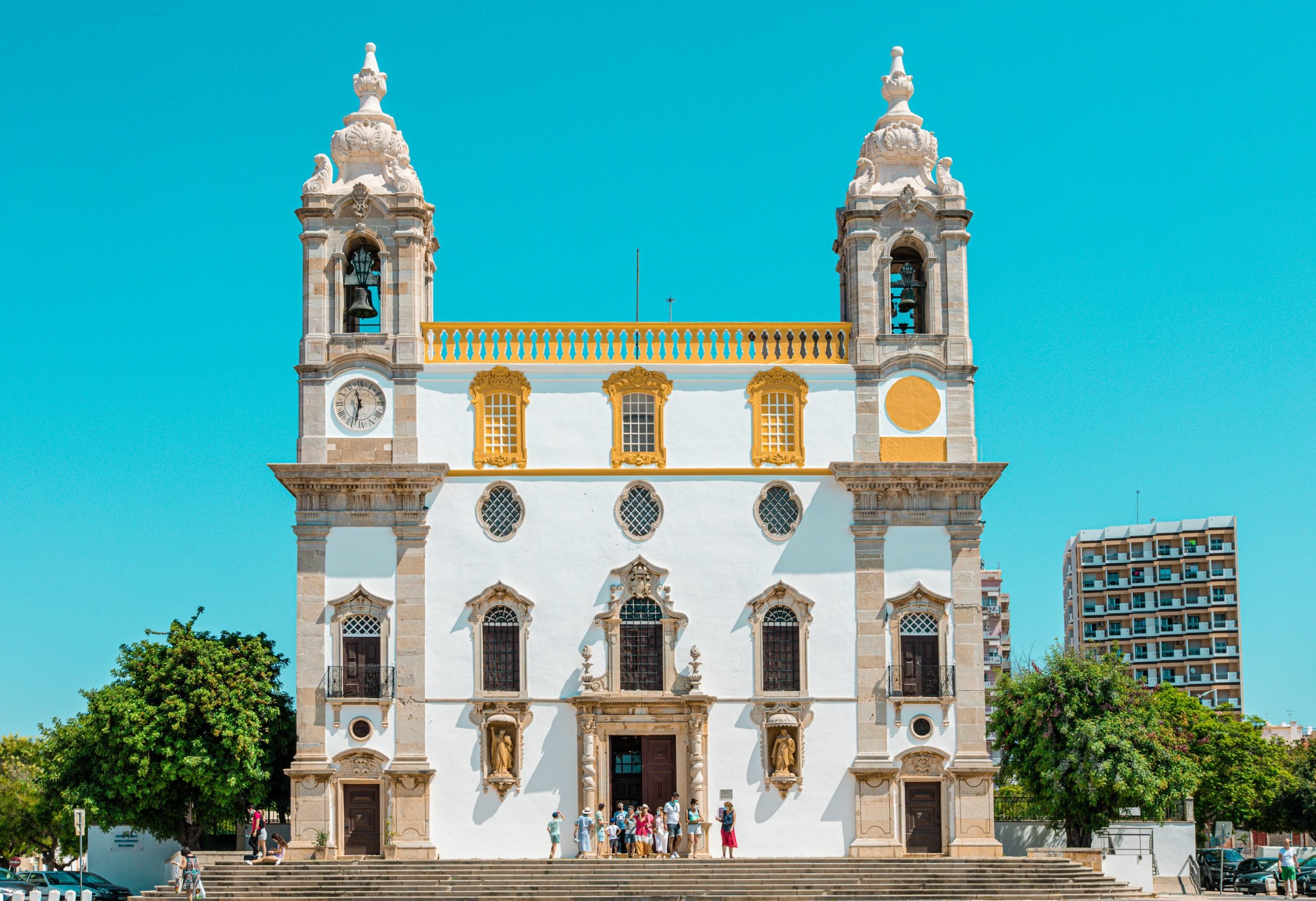
Tavira
Tavira has a history dating back to pre-Christian times, when it was inhabited by various peoples, including Phoenicians, Romans and Visigoths. However, it was during Muslim rule that the city really began to flourish. Known as “at-Tabira” in Arabic, Tavira witnessed a new era of prosperity and development under Islamic rule. The city became an important strategic and commercial center, with its port acting as an important gateway for trade with other cities in Europe.
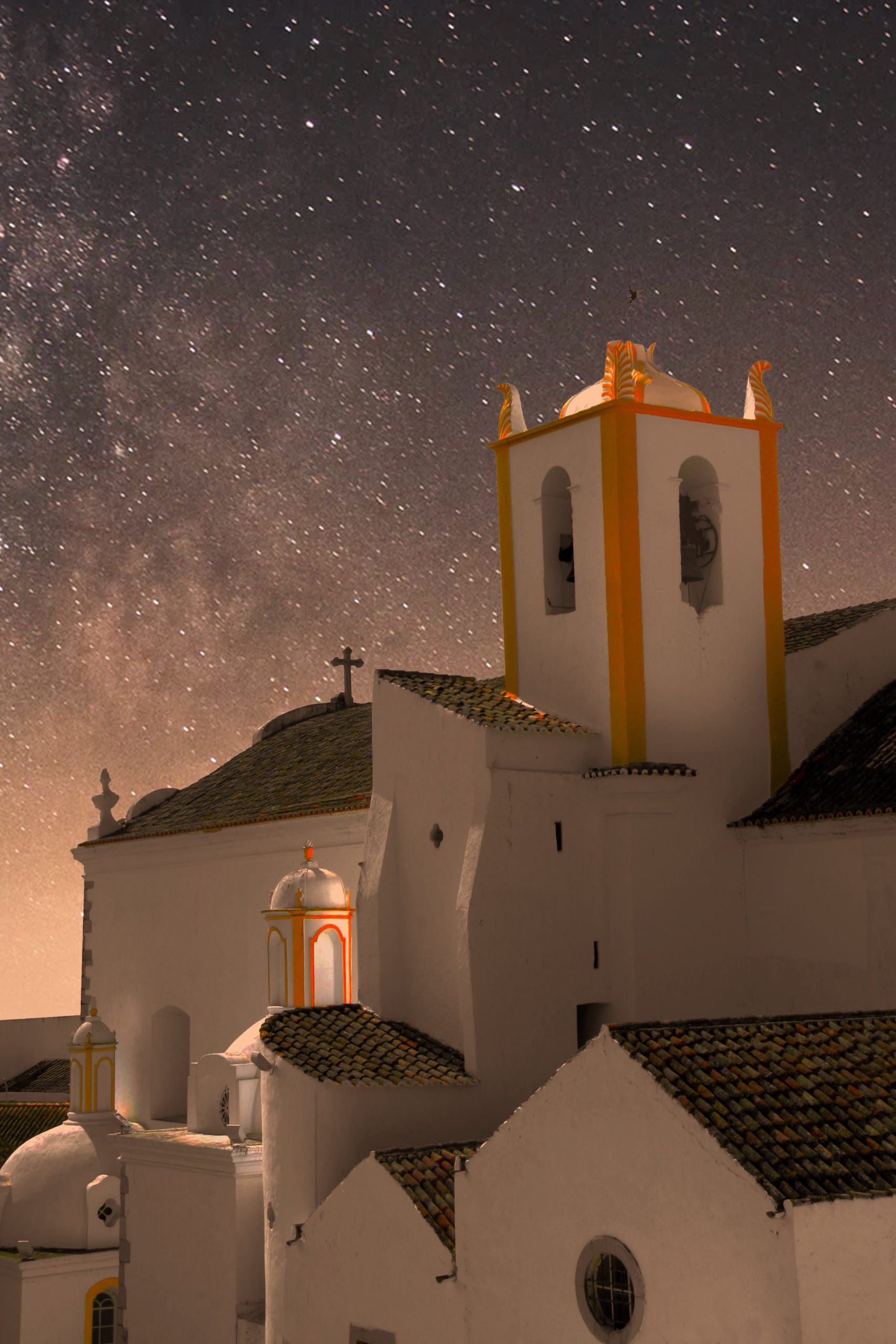
Despite Muslim rule, Tavira did not remain under Arab control forever. In 1239, D. Paio Peres Correia led the conquest of the city, marking the beginning of a new chapter in its history. Under Christian rule, Tavira experienced a period of reconstruction and renewal, culminating in the granting of a royal charter in 1266 by King Afonso III. This event marked the beginning of an era of economic and social growth for the city, with its Moorish population being integrated into the Christian community.
The 15th century was a period of greatness and prosperity for Tavira. The city’s port was the starting point of the Portuguese armada for the conquest of North Africa in 1415, demonstrating its strategic importance. Tavira also played a vital role in maritime trade, exporting salt, fish and wine to other European cities. Fishing, especially tuna fishing, flourished at this time, further contributing to the town’s wealth.
The 16th century marked an important milestone in Tavira’s history, when the town was elevated to city status in 1520 by King Manuel I. This recognition reflected the continued growth and development of Tavira, which became a prominent population center in the Algarve. Its armory industry prospered, supplying armor and weapons to the Portuguese troops in Africa. In addition, Tavira received significant commercial benefits, including annual fairs authorized by the Portuguese monarchs.
Today, traces of Arab influence can still be seen in Tavira, from the architecture of the old town’s narrow streets to the remains of the old Muslim castle. Visitors can explore the picturesque alleys, visit the local market, and taste traditional cuisine in restaurants that preserve Arab culinary traditions. As you stroll through the cobbled streets and soak up Tavira’s unique atmosphere, you can feel the rich heritage left by the Muslim rulers who once ruled this charming town.
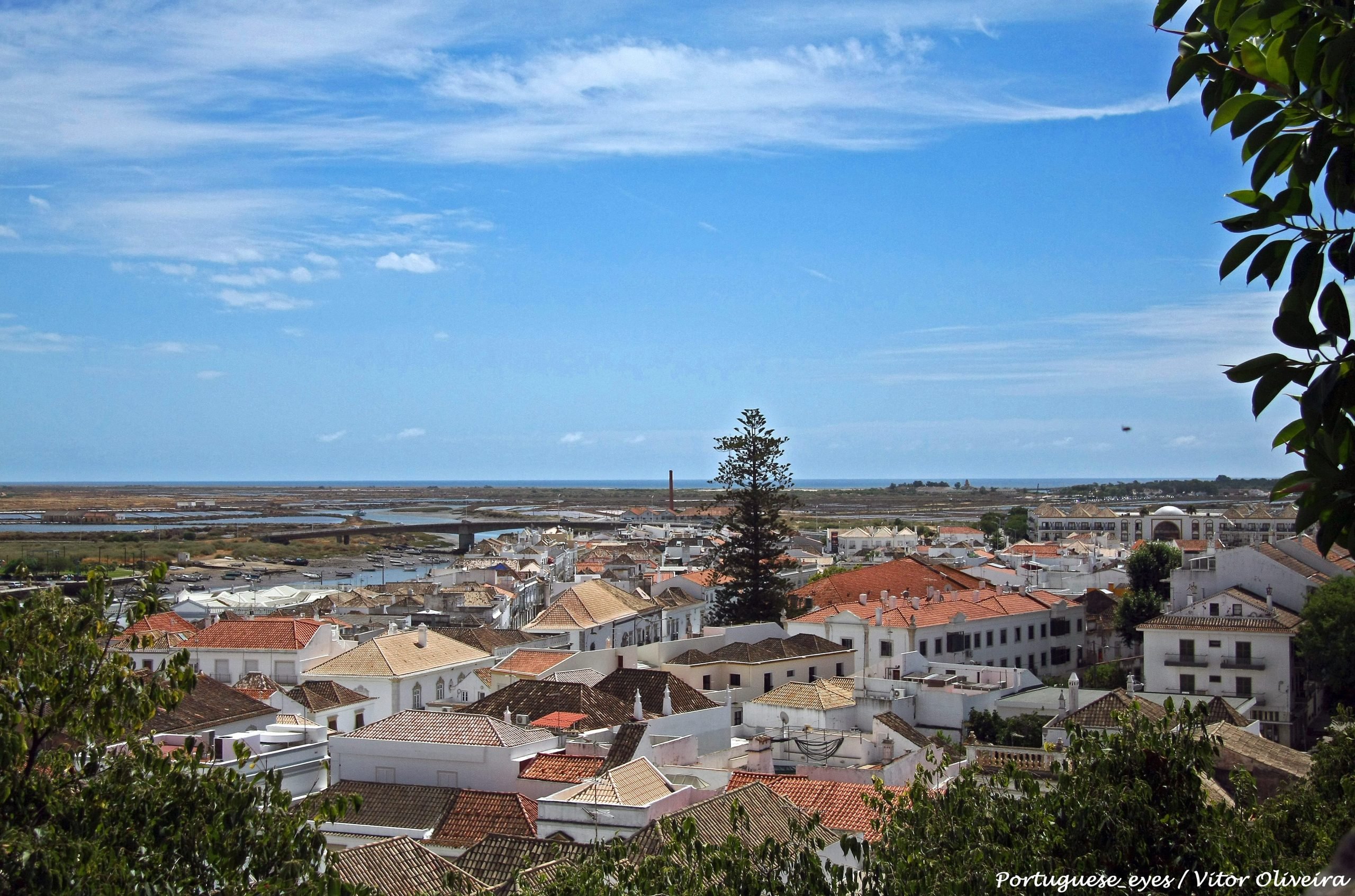
Final Thoughts
In the echo of ancient walls and in the narrow alleys of Portuguese cities lies an intriguing and forgotten narrative: the Arab presence. In this article, we delved into the deepest parts of the past, exploring everything from the grandiose towers of Coimbra to the silent shores of Tavira.
Each city, each street, bears traces of a time when the Moors dominated these lands. In Santarém, the shadows of the mosques echo through the centuries, while in Lisbon, the marks of Arab culture are woven into the city’s roots. In Alcácer do Sal, history mixes with the waters of the Sado, while in Elvas, the walls bear witness to centuries of resistance and conflict.
As we explore these places, we are confronted with the complexity and richness of this cultural heritage. It is a story of conquest and exchange, of war and peace, shaped by the hands of different peoples over time.
At the end of this journey, we are reminded of the importance of understanding and preserving the past in order to better understand the present. The Arab presence in Portugal is more than just a footnote in history; it is a living testimony to human diversity and resilience. May we continue to explore and celebrate this rich heritage, honoring those who came before us and learning from their stories.

